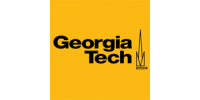- Sur www.coursera.org
Introductory Physics I with Laboratory

- À son rythme
- Accès libre
- Certificat gratuit
- 11 séquences
- Niveau Introductif
Détails du cours
Déroulé
(NB: This syllabus will be revised soon to reflect a 16-week term; please check back later. )
Week 1: Motion in 1D: Kinematics, Vectors (Part 1) & Newton’s 2nd Law
Lab 0: Install Video Analysis & Computer Modeling Software
Week 2: Motion in 1D: Prediction of Motion; Constant/Non-Constant Forces
Lab 1: Constant Velocity Motion in Your Surroundings
Week 3: Motion in > 1D: Vectors (Part 2) & Newton’s 2nd Law
Week 4: Motion in > 1D: Prediction of Motion; Momentum
Lab 2: Free Fallin’ with Drag (1D Dynamics)
Week 5: Curving Motion, Including Uniform/Non-Uniform Circular Motion
Week 6: Energy Principle; Work
Lab 3: Galactic Black Holes (>1D Dynamics)
Week 7: Multiparticle Systems: Potential Energy
Week 8: Energy Applications
Lab 4: Rope Physics in Sports (Forces & Energy)
Week 9: Energy & Momentum: Collisions
Week 10: Angular Momentum Principle
Lab 5: Free Choice Project (Energy & Momentum)
Week 11: Final Exam; Lab 5 Submit & EvaluatePrérequis
Intervenants
- Michael Schatz - School of Physics
- - Georgia Tech Professional Education
Éditeur
Le Georgia Institute of Technology, connu aussi sous le nom de Georgia Tech ou GT, est une université de recherche mixte publique, et située à Atlanta (Géorgie), aux États-Unis. Elle fait partie du réseau plus large du Système universitaire de Géorgie (en anglais, University System of Georgia). Georgia Tech possède des antennes à Savannah (Géorgie, États-Unis), Metz (France), Athlone (Irlande), Shanghai (Chine), et Singapour.
Georgia Tech a acquis sa réputation grâce à ses programmes d'ingénierie et d'informatique, ceux-ci figurant parmi les meilleurs du monde5,6. L'offre de formation est complétée par des programmes dans les domaines des sciences, de l'architecture, des sciences humaines et du management.

Plateforme
Coursera est une entreprise numérique proposant des formations en ligne ouverte à tous fondée par les professeurs d'informatique Andrew Ng et Daphne Koller de l'université Stanford, située à Mountain View, Californie.
Ce qui la différencie le plus des autres plateformes MOOC, c'est qu'elle travaille qu'avec les meilleures universités et organisations mondiales et diffuse leurs contenus sur le web.

